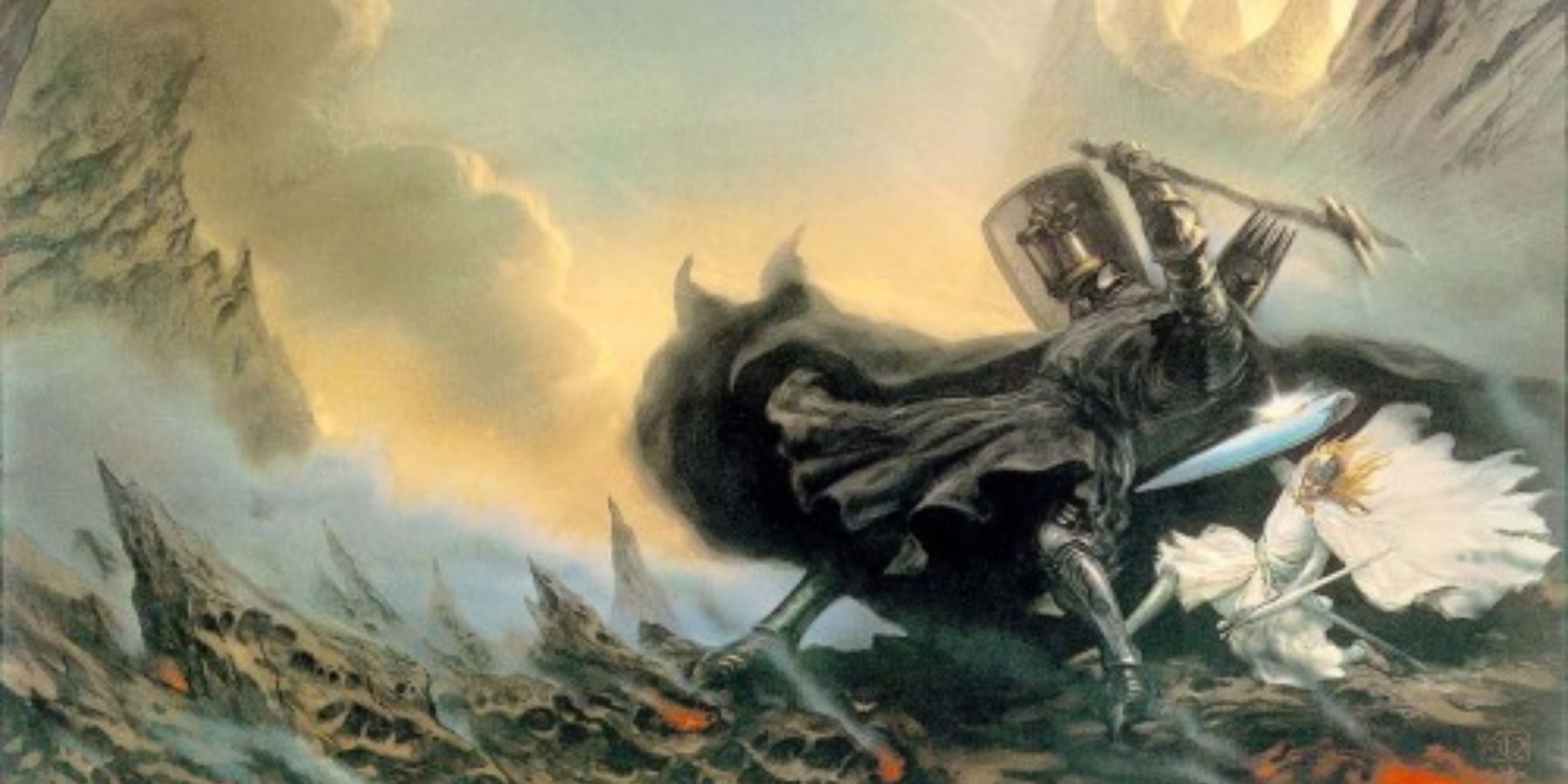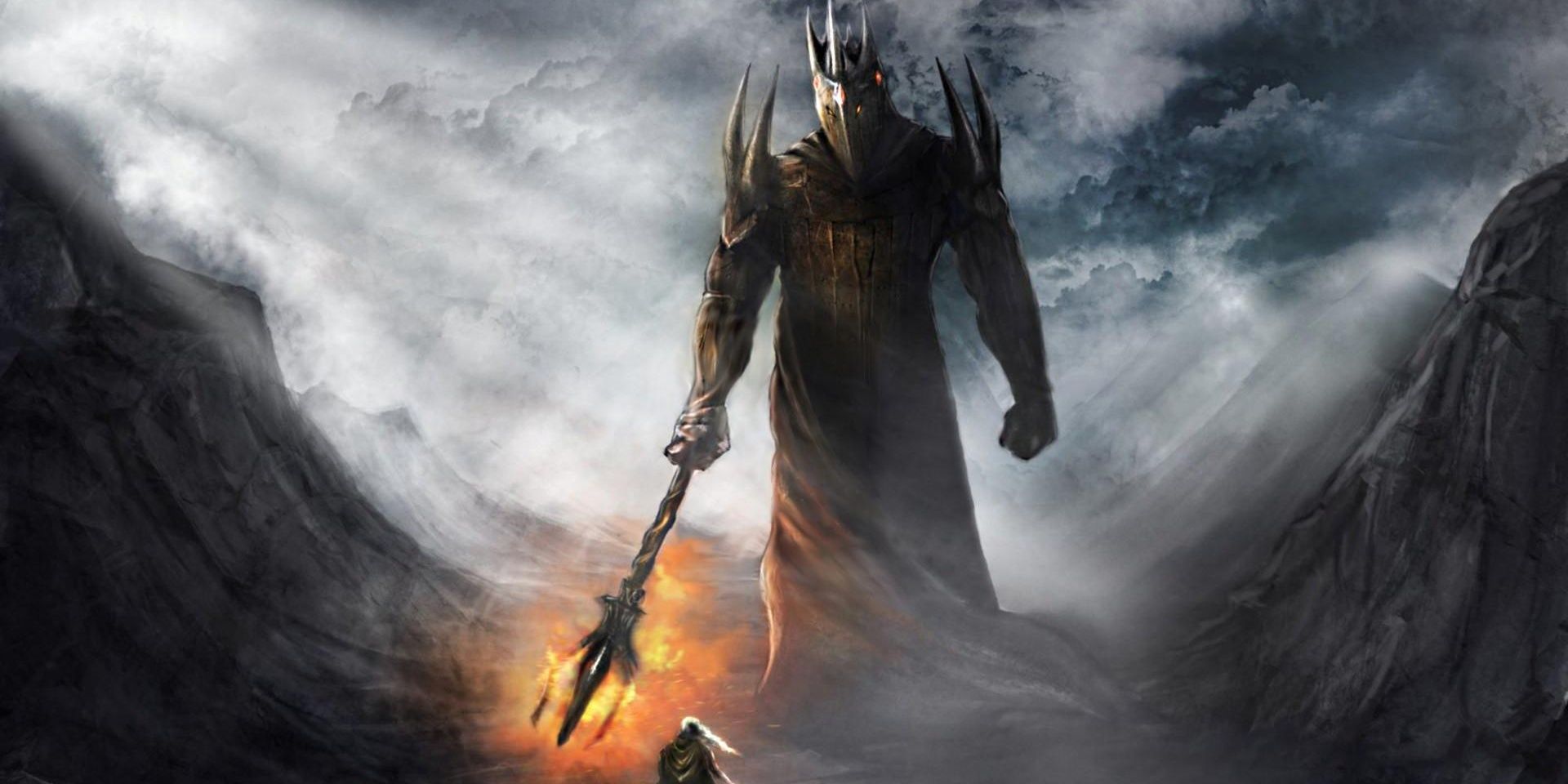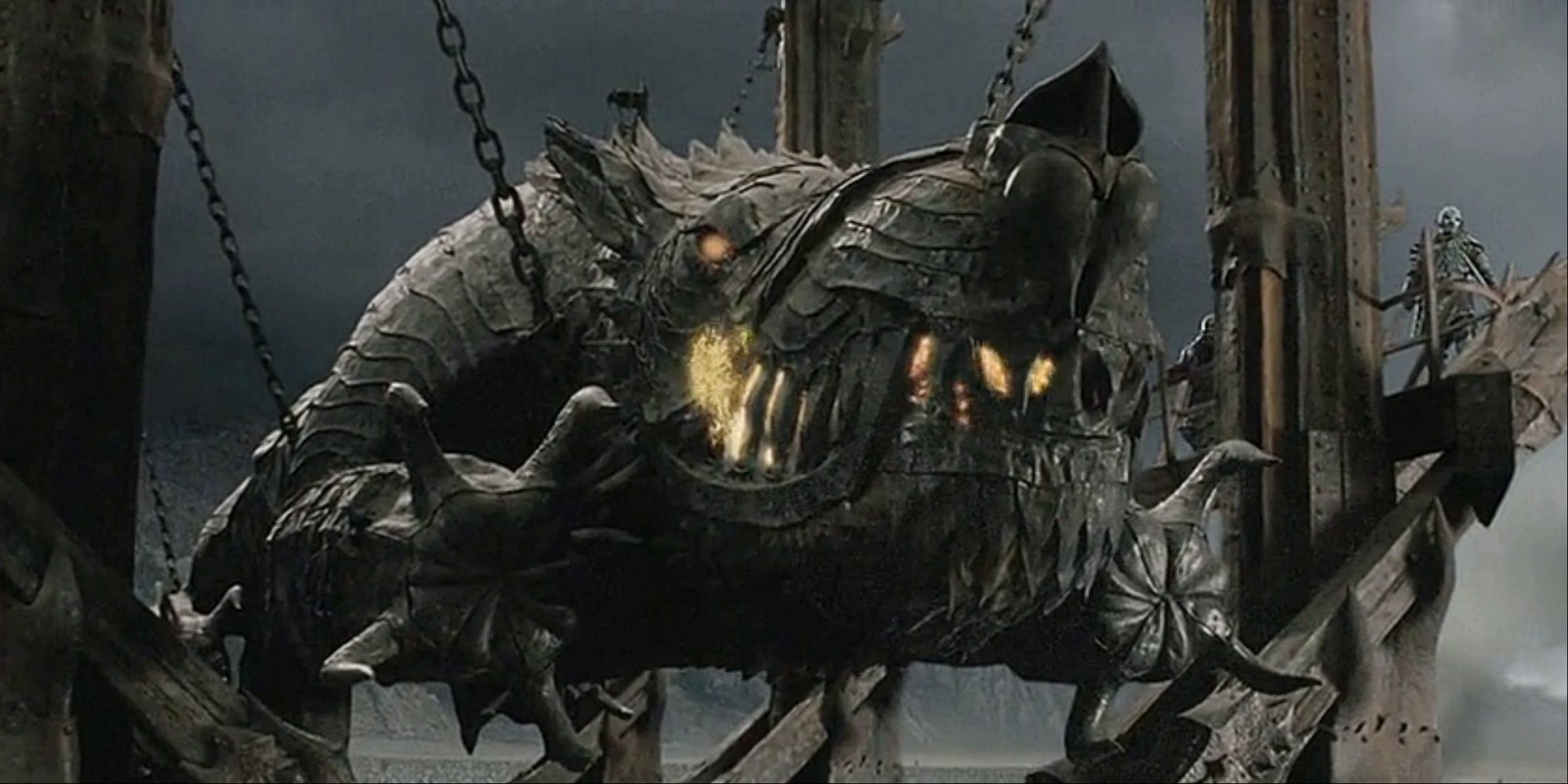Anyone who'd like to grant a little extra oomph to a fantasy weapon need only give it a fancy name. Lord of the Rings lets almost every central hero and villain slap a label on their sword, bow, staff, or other armament. While the Fellowship carried honorable weapons like Sting and Andúril, the first Dark Lord Morgoth wielded Grond, the Hammer of the Underworld.
J. R. R. Tolkien applied different levels of depth and specificity to various events and details. Some stories from the War of the Ring feature enough background to fill two or three additional books. Other parts of Middle-earth are shrouded in darkness. Some battles aren't as important as others, but Tolkien still provides enough to dig up fun elements of almost any person, place, or thing.
What was Morgoth's warhammer, Grond?
When Morgoth was created, he was the second-most powerful being in all creation. He was the mightiest of the Ainur, deities created by Eru Ilúvatar to create the universe Eä. In his pride and ambition, Morgoth sought to corrupt or destroy his sibling's great works. His enemies were the Valar, the most capable fourteen Ainur. Morgoth lost his first few conflicts with the Valar, but they were too quick to forgive his crimes. He relied on deception, carefully crafting lies to convince some Elves to rebel against the Valar. Fëanor, a proud Elvish prince, vocally opposed the Valar, but when his actions partially led to his father's death and the loss of the Silmarils, he cursed Morgoth. Morgoth later dealt massive wounds to the Elven armies. Fëanor's brother, Fingolfin, issued a rare challenge of single combat. Morgoth rarely fought under such honorable conditions, but the challenge was too insulting to ignore. Morgoth donned his armor and drew his mightiest weapon.
Morgoth fought Fingolfin with Grond, the Hammer of the Underworld, though it was also described as a two-handed mace. Grond has two meanings in different Elvish languages. In Quenya, the word means "club" from a term referring to rough wood. In Sindarin, it means "very weighty and ponderous." Nothing is known about the weapon's construction, but its name suggests it's massive and crude. Morgoth only wielded Grond in his duel with Fingolfin. He preferred to allow his minions to fight for him, employ subterfuge, or enact powerful magic to win his conflicts. Morgoth's duel came after the Dark Lord's prime. Though he was born the second most capable being on Arda, he spread or sacrificed his power several times. His primary goal was to corrupt Eru Ilúvatar's creation, which he could only accomplish by seeding his dark will across the planet's surface to infect every living thing. Morgoth was also weakened by stealing the Silmarils, which seared his skin. Those impacted his duel with the Elven King. The weapon is described poetically here:
Then Morgoth hurled aloft Grond, the Hammer of the Underworld and swung it down like a bolt of thunder.
Grond's might is inarguable. With every strike, Grond summoned a bolt of lightning that seemed to sunder the ground beneath it. Its blows left craters in the Earth. Those scars upon the land quickly filled with smoke and fire. It's unknown whether the weapon was enchanted to summon fire or able to break through the Earth's crust to unleash lava. Grond would likely have dealt tremendous damage if it had hit its target. Fingolfin dodged each of Morgoth's strikes while dealing seven wounds to the mighty Ainu. However, eventually, Fingolfin grew tired and tripped into one of Grond's craters. Morgoth crushed the Elven king beneath his great black shield, but not before Fingolfin struck another blow upon his foot. Morgoth won, but he would carry scars and a limp for the rest of his life. Thorondor, the King of the Eagles, saved Fingolfin's body from being fed to the wolves and carried him to a mountaintop where he'd be buried. Grond defeated Fingolfin without ever landing an attack.
Where else in LOTR does the name Grond appear?
Sauron, Morgoth's lieutenant and eventual successor, used the name Grond to refer to his battering ram. It took its title from the Hammer of the Underworld, but it was designed after Carcaroth, a mighty werewolf from the First Age. The smithies of Barad-dûr built this Grond to force open the Great Gate of Minas Tirith. It was 60 feet high and 150 feet long. The black steel was inscribed with destructive magics. Grond required a small army of Orcs and Trolls to operate. Living up to its name, the ram destroyed the Gate after only three strokes, as described in Return of the King:
Thrice the great ram boomed. And suddenly upon the last stroke the Gate of Gondor broke. As if stricken by some blasting spell it burst asunder: there was a blast of searing lightning, and the doors tumbled in riven fragments to the ground.
Grond is a mighty weapon that never unleashed its true potential. One could certainly imagine its effects on Fingolfin, but its size and weight made it too unwieldy to affect its target. A clever reader could construct the weapon in a Dungeons and Dragons game with other weapons from Tolkien's lore. Morgoth needed an armament mighty enough to suit his strength, and only the Hammer of the Underworld could fit the bill.






